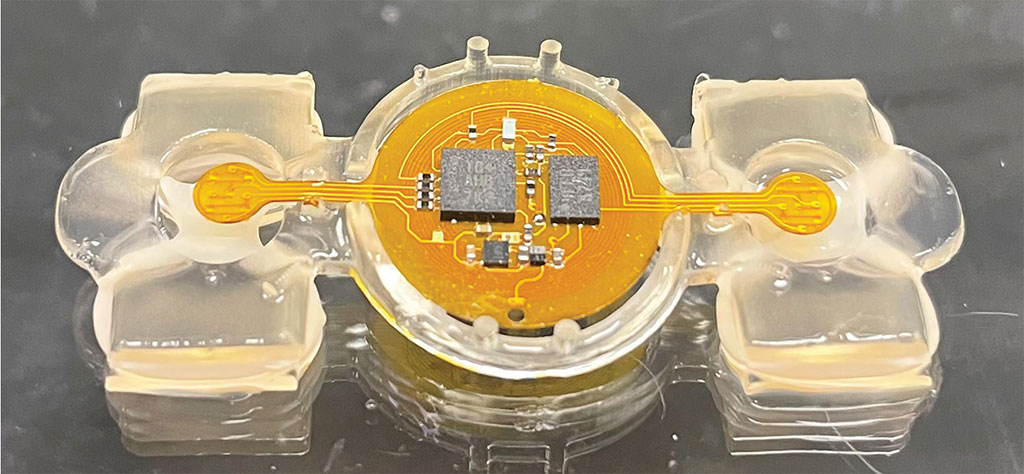
Photo: eBiobots are the first wireless bio-hybrid machines, combining biological tissue, microelectronics, and 3D-printed soft polymers (Photo courtesy of Yongdeok Kim)
A team of researchers has developed miniature, remote-controlled biological robots that could find potential applications in medicine, such as in minimally invasive surgery or cancer detection in the human body.
Hybrid “eBiobots” are the first to combine soft materials, living muscle, and microelectronics, according to researchers at the University of Illinois Urbana-Champaign (Champaign, IL, USA), Northwestern University (Evanston, IL, USA), and collaborating institutions. They described their centimeter scale biological machines in the journal Robotics science .
Researchers at the University of Illinois at Urbana-Champaign had previously developed biobots, which are small biobots powered by mouse muscle tissue grown on a soft, 3D-printed polymer skeleton. In 2012, the team demonstrated a walking bio-robot. In 2016, they also demonstrated light-activated biorobots that gave researchers some control. However, the inability to deliver pulses of light to biorobots outside of a laboratory environment has limited their practical applications. This time, Northwestern University researchers helped integrate tiny wireless microelectronics and tiny, battery-free LEDs, allowing them to remotely control eBiobots.
With the goal of providing bio-robots with freedom of movement to make them suitable for practical applications, the researchers focused on getting rid of bulky batteries and tethering cables. eBiobots use a receiver coil to collect power and provide a regulated output voltage to power the small LEDs. The researchers can send a wireless signal to the eBiobots that will cause the LEDs to flash. The LEDs trigger the contraction of photosensitive muscles, moving the polymer legs so the machines can “walk.” The LED lights are focused so tiny that they can activate specific parts of the muscles, causing the eBiobot to rotate in the desired direction.
Using computer modeling, the researchers optimized the design of the eBiobot and its integrated components for durability, speed, and maneuverability. The iterative design and additive 3D printing of the scaffolds allowed for rapid cycles of trials and improved performance, according to the researchers. The design offers the potential for future integration of additional microelectronics, such as chemical and biological sensors, or 3D-printed scaffolding pieces for functions such as propelling or carrying objects that biobots can find. Integration of electronic sensors or biological neurons could allow eBiobots to detect and respond to disease biomarkers, among other possibilities.
“Integration of microelectronics allows the merging of the biological world and the world of electronics, with many advantages of their own, to produce these bio-robots and electronic machines that could be useful for many future medical, sensor and environmental applications,” said study co-leader Rasheed Bashir, professor of bioengineering at State University. Illinois and Dean of the Grainger College of Engineering.
“By developing the first hybrid bioelectronic robot, we are opening the door to a new paradigm of healthcare innovation applications, such as biopsies and on-site analysis, minimally invasive surgery, or even cancer detection within the human body,” said the co-author. Zhengwei Li, assistant professor of biomedical engineering at the University of Houston.
Related links:
University of Illinois Urbana-Champaign
Northwestern University

“Beer enthusiast. Subtly charming alcohol junkie. Wannabe internet buff. Typical pop culture lover.”
